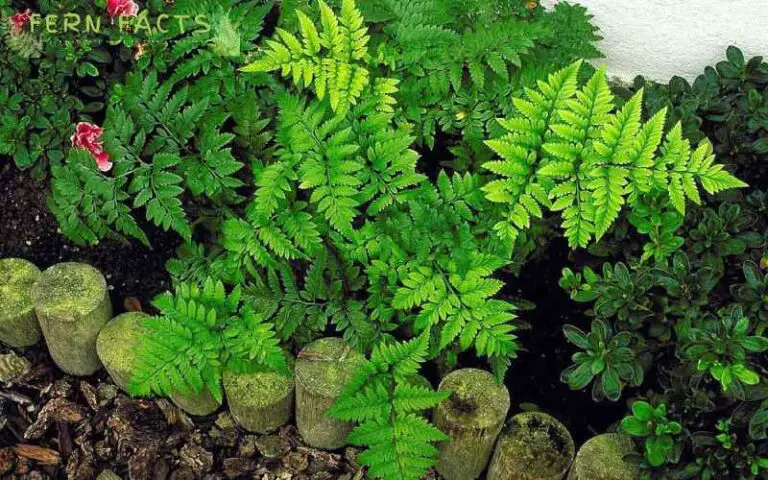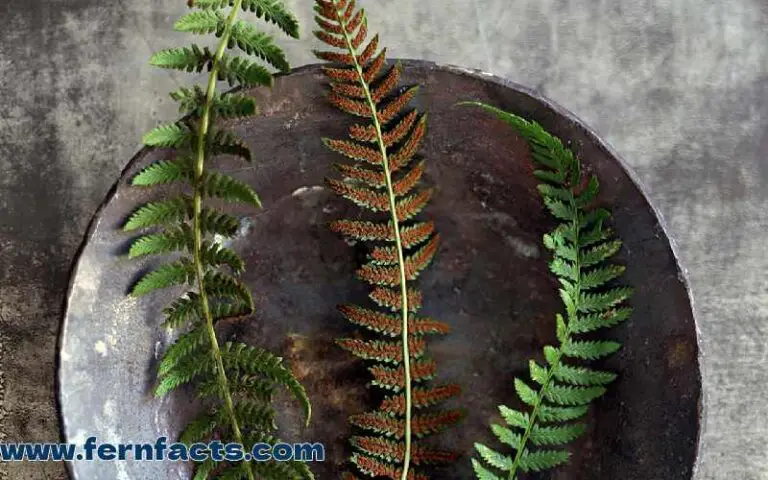How to Care for Monarch Fern
Have you heard about Monarch Fern yet? Well if not! Then read this article thoroughly. Here I’ll illustrate the overall idea about monarch ferns along with their characteristics.
Side by side I’ll also give you their best growing conditions so that you can make them thrive at your own house. Also, I’ll tell you how to propagate, pot, and transplant these ferns.
So stay tuned to this article from head to toe.
Overview of Monarch Fern
- Botanical name: Phymatosorus scolopendria
- Common names: Monarch fern, Wart fern, Musk fern, maile-scented fern, breadfruit fern
- Plants: Evergreen or Perennial garden plant
- Native range: Australia, Africa
- Native habitats: tropical climate
- Shade requirements: partial to full shade
- Height: around 2 to 3 ft
- Soil: acidic, neutral, moist, and well drained
- Toxicity: fronds toxic
Monarch fern has beautiful glossy lobed fronds that are mostly natively Africa and Australia. Including this country, they have also been found in Fiji, the South Pacific, French Polynesia, the Western Pacific, etc.
Usually, in their native habitats, they grow on trees, crevices, walls, and rocks. These ferns are also known as wart ferns, and musk ferns in many local regions.
However, their fronds are a bit toxic; therefore it is not recommended for you to eat this plant’s fronds. However, it has been used for medical purposes for decades.
Many native people used this fern to treat their cold, and stomach pains. Similarly, these ferns are also used on wounds to heal them organically.
Monarch Fern Growing Requirements
If you want to grow these fern at your house then you need to give them their ideal growing conditions. Here are those growing requirements:
Lighting
These Monarch ferns are fond of indirect sunlight. So, a partially bright place to be l would be an ideal condition for these ferns to thrive.
Try to avoid keeping them under direct sunlight which can burn their fronds. Just place them in a north-facing window in order to provide the brightness, not direct sun exposure.
However, you can also get their robust growth in dim light conditions. Just place them in a dark room with low light or little light conditions; they will grow actively.
Soil
These ferns prefer moderate acidic humus soil to grow. Therefore, try to make soil with rich proponents. Besides, the soil should be well drained because poorly drained soil could lead your ferns to have many unwanted diseases.
Thus, try to make rich humus moderately acidic soil for your ferns. To make the soil rich, you can mix organic compost, peat moss, perlite, leaf mold, coconut coir, vermiculite, etc.
Yearly, do the repotting with new potting soil that will intensify their growth.
Water
Similar to all other ferns, these Monarch ferns prefer wet, humid, and moist soil throughout the year. That’s why, try to keep them well-hydrated and moist.
Don’t let the dry out completely which might be affecting your fern. Similarly, do not overwater your plants, it can rotten their roots.
For watering your Monarch fern, water them thoroughly to the bottom. Let’s make sure all the water gets drained out properly. Otherwise, standing water can give your plants rotten roots.
On average, water your plants once a week or twice a week according to the environment.
Temperature and Humidity
These ferns prefer a 20 to 38°C atmosphere for their growing condition. They still can tolerate around 5 to 45°C temperatures but not more than that.
If the temperature drops below 5°C, they cannot survive in such climates. Additionally, they also prefer humid and moist environments. Excessive dry environments can affect your Monarch ferns.
If the humidity drops below, then their fronds will not be any more green and thick.
Fertilizer
For fertilizing purposes, you can use slow-release organic fertilizer plant foods to keep their nutrition in the soil.
Since ferns are low maintenance, still they’ll require some external boost to thrive; that’s why fertilization is important to some extent. Try to use fertilizer in their growing seasons which will boost their growth.
Simply, feed your plants once a year which will increase their growth by the upcoming year.
Pruning
Just trim or pull off any damaged dead or brown fronds during the early spring seasons. It will boost their growth in a healthy way.
How to Do Potting of Monarch Ferns?
For potting and repotting purposes, just follow the steps given below:
- Choose a pot deeper shallow container that is at least 2 inches bigger than the previous one.
- Fill the pot with your new mixer soil with leaf mold, coconut coir, and organic compost.
- Then, remove the main plant from the previous pot
- Afterward, remove the soil from the edges and hold the rootball
- Then replant the root ball in the new pot and fill the pot with your new potting soil.
- Lastly, water your plants to give them proper hydration.
Monarch Fern’s Propagation Process
Well, you can propagate these ferns by spores collecting process or stems cutting or division process as well.
Spores Collection Process
- For this method, you need to collect any mature plants which have new spores underneath the fronds.
- Take a white paper to collect the spores from the fronds.
- Just tap or flick the fronds with your finger slightly and let spores fall onto your paper slowly.
- Keep the paper aside and prepare the soil.
- Now move to the new soil mixture. Mix the soil with rich organic matter like lead mold, coconut coir, organic compost, etc in equal amounts.
- Then take the paper and spread the spores on the soil. make sure the spores don’t get direct sunlight because it can burn the spores
- . Try to cover the spores with plastic wrap which will maintain the hydration.
- Try to hold the moisture as well.
- Within a few weeks, you will spot a green structure coming through from the soil surface of the ground if the process has been done successfully.
- When you observe the first shoots, let it be a little stable.
- After a few days, replant the established shoots into a pot or container while maintaining the daily routine.
Stem Cutting Process
- In order to use the stem cutting process you need to cut fresh stems of your Monarch fern’s fronds.
- Sterilize the scissor before you use it. And cut the fresh healthy fronds of your ferns.
- Put the stems in a glass or in a jar.
- Pour water into the jar.
- Let the roots grow there for a few days until they grow new roots.
- When they become a little grown up with their new fresh roots, you can plant them in a pot.
- Or you can directly plant the cutting fronds in the soil. The roots will grow automatically under the soil.
- Then follow the normal basic caring routines.
Division process
The ideal time for separation would be in the mid to late spring time. Follow the steps below to transplant or separate your Monarch ferns.
- During the late spring seasons, dig up the whole plant from the pot or ground.
- Preferably, you can wear gloves before this process.
- After you remove the plant from the pot, give some water to soften the soil. It will be easier for you to separate the roots.
- Then you need to divide the roots from the main plants with any trowel or knife.
- Prepare new potting soil by adding organic matter, leaf mold, coconut coir, etc in half portions.
- Then plant the section into the new pot or yard.
- Try to ensure each part has the same sort of roots before you plant them.
- Finish this process by pouring water on them.
- After replanting your ferns, try to locate them in a partially shaded place until you see some new growth in your ferns.
Benefits of Monarch Ferns
Well, surprisingly these ferns conquer several beneficial sides that can also be a plus point for you. These ferns have medical benefits such as healing wounds or stomach pains.
Similarly, they can also be used for treating colds as well. Moreover, It’s also used as ornamental plants in many indoor places to decorate the place.
Conclusion
In a nutshell, Monarch ferns are low-maintenance ferns that will enhance your garden’s beauty with their green bushy foliage.
You can effortlessly grow these ferns in your house by giving them their ideal growing conditions. Also, you can do repotting, propagation, and transplanting of your own by going through this article rigorously.
Ultimately you can have astonishing thieving Monarch ferns at your house to look at.







